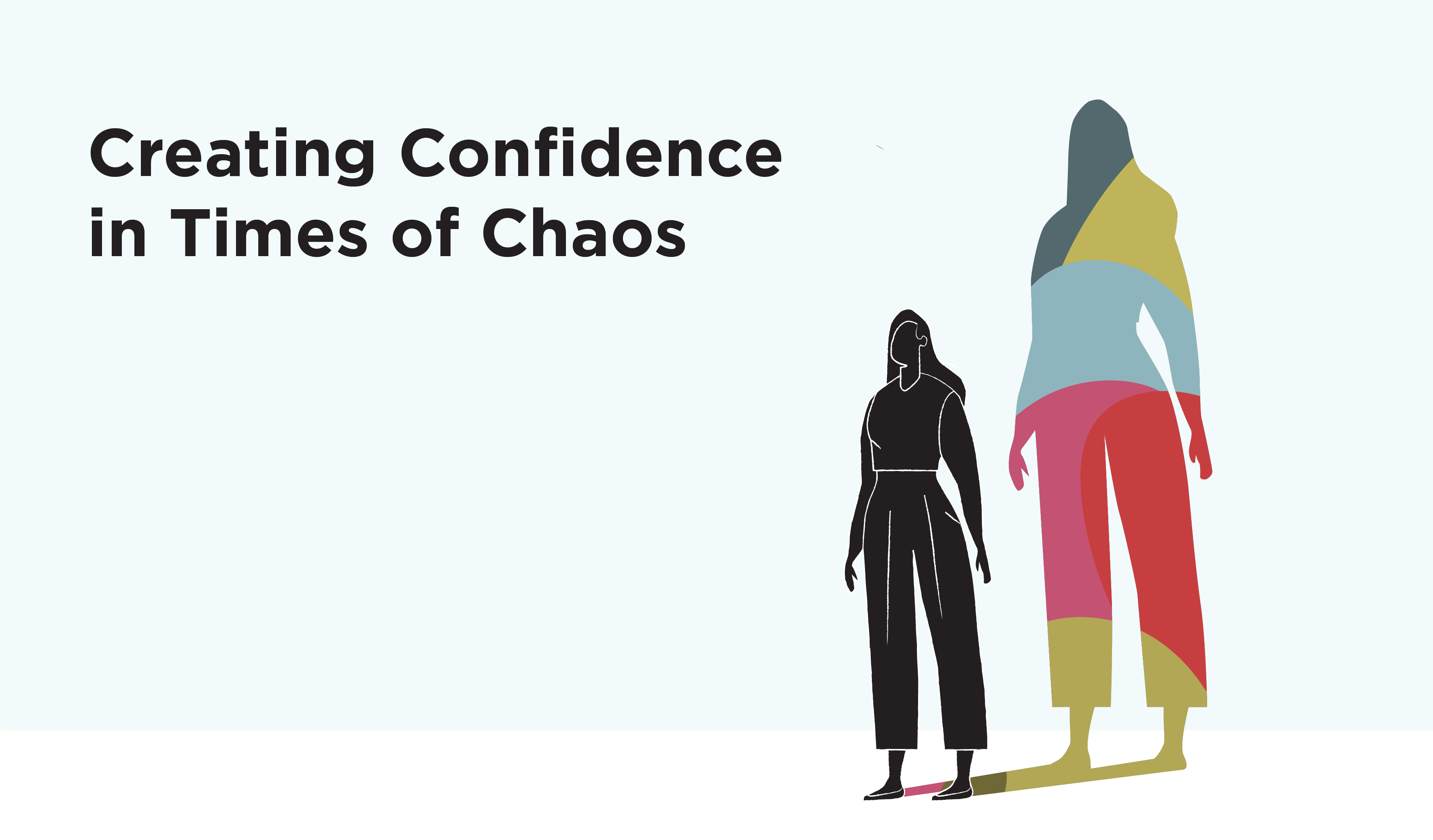How to Use Design Thinking to Create Confidence in Times of Chaos

Lately, it feels like chaos is all around us. When this happens, it can lead to a lack of confidence in decision making, work process, and current solutions. Core services that have been originally designed to be offered in person now have to adapt, translated to a digital experience. Teams now need to deliver the same level of quality while working from home. Timelines for key product upgrades are crunched from months down to weeks (or even days). As leaders, we are programmed not to panic during times of sudden upheaval. We are sought after to bring calm to the storm. In these times, we should be wary of resorting to a default of just doing something.
We’ve found that a disciplined, iterative approach in design thinking methodology helps calm the chaos, and focuses attention on what’s most important - the success of your customers and employees. It’s a mindset to help you lead and instill confidence. Everyone wants to take action and help, everyone wants to do something. Leveraging aspects of design thinking will ensure everyone is doing the right things.
These core questions can help you take action the right way, applying design thinking principles while still moving quickly to identify and build the correct solutions:
-
Start with empathy—How can I help my team or my customers? Everyone experiences chaos in a different way. Your ability to recognize what your employees and customers need will always be key to your success as you manage through a crisis. Empathy is at the heart of design thinking, and it should be at the heart of your reaction to organizational disorder.
-
Don’t forget about research - What do we know, and what’s missing? Research is often the first thing to get tossed aside in urgent times, but it’s still important to build your solutions on a bedrock of solid facts rather than rushed assumptions... While you probably don’t have time for a deep examination, you can still take stock of the metrics at your immediate disposal. Also, look at some of the questions that can be answered with quick, streamlined tactics like ongoing usability tests or quick surveys.
-
Define the problem - What are the most pressing problems you need to solve? Your roadmap for the year has just been condensed into two weeks. Even the laws of business physics, which often don’t follow the laws of nature, can’t make that happen without throwing some things out. You need a prioritized list, with your biggest customer and internal stakeholder needs at the top, to point you in the right direction as you focus your plans. Customers want to feel safe and confident they can trust your solution to meet their needs.
-
Prototype, test and iterate - What are your best and most accessible solutions? We speak with our clients frequently about the ability of UX prototyping to de-risk innovation. In times of chaos, we’re forced to innovate at an ever-increasing pace, with the stakes being much higher than in more “normal” times. Your team may be faced with decisions across multiple different solution sets. Our recommendation? Don’t abandon the prototyping process, even when you’re on a time crunch. Messaging, user interface adjustments, and necessary product iterations can all be prototyped and tested quickly (even in a day with pen and paper)...minimizing your risk of going down the wrong path.
People say that stress pushes us to revert to our most comfortable state. For design leaders, our most comfortable state, where design thinking guides, can be leveraged to lead quality decision making. Embrace this process that leads to confident solutions...even as the world changes around you.